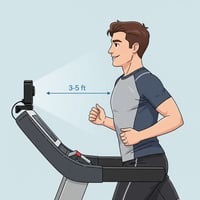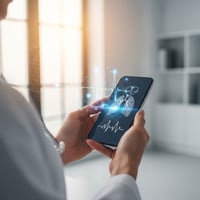In the competitive landscape of professional development, the market opportunity for leveraging...
Innovative Wellness Device Monitors Sleep for Apnea-Like Events
In the realm of sleep medicine and patient care, the innovative application of technology continues to offer promising adjuncts to traditional clinical approaches. One such advancement is the SmartSpectra SDK, utilized in the development of a wellness device designed to monitor respiratory patterns during sleep, particularly observing for prolonged pauses that could indicate potential apnea episodes. This device, while not a certified apnea monitor, serves as a wellness tool to alert users to possible apnea-like events by vibrating or issuing alerts, prompting them to adjust their sleeping position. It’s an intriguing blend of technology and wellness designed to complement, not replace, professional medical advice and diagnostics.
Understanding the clinical accuracy and the application of such technology is crucial for healthcare professionals advocating for evidence-based approaches. The SmartSpectra SDK boasts notable accuracy metrics, with a heart rate Root Mean Square Deviation (RMSD) of 1.95 bpm for 30-second spot checks and a respiratory rate RMSD of 2.25 bpm. These figures suggest a significant level of precision for a wellness device, providing users with reliable data on their heart and breathing rates during sleep.
However, it's imperative to emphasize the non-diagnostic nature of this tool. The device, powered by SmartSpectra SDK, flags potential apnea-like events, yet it must not be misconstrued as a certified apnea monitor. Any alert it generates includes a disclaimer advising users that the device is designed for wellness purposes only and recommends a follow-up with medical professionals for a thorough evaluation and diagnosis. This distinction ensures users are informed about the device's capabilities and limitations, fostering a responsible approach to health monitoring.
In practical healthcare settings, this wellness device could be a beneficial adjunct to patient care, particularly in monitoring and managing sleep wellness. It could serve as an initial step or a complementary tool in a broader sleep apnea management strategy, especially for patients in remote areas or those awaiting more comprehensive sleep studies. Nevertheless, healthcare providers must guide patients in understanding that while this device provides valuable insights into sleep patterns, it is not a substitute for professional sleep studies and diagnosis.
A notable limitation that must be considered is the reliance on user compliance and the potential for false positives or negatives. As with any wellness device, the accuracy and efficacy are contingent on proper use and interpretation of the data it provides. Healthcare professionals should provide clear guidance on how to use such devices effectively and the importance of following up on any alerts with professional medical advice.
Looking to the future, contactless health monitoring technologies like the SmartSpectra SDK represent a significant stride toward more accessible and proactive wellness tools. As the technology evolves and integrates more seamlessly into healthcare frameworks, it offers the potential to enhance patient care by enabling early detection, promoting patient engagement in their health, and potentially reducing the burden on healthcare systems. While mindful of their limitations, embracing these innovations could pave the way for a more holistic and patient-centered approach to health and wellness monitoring.





